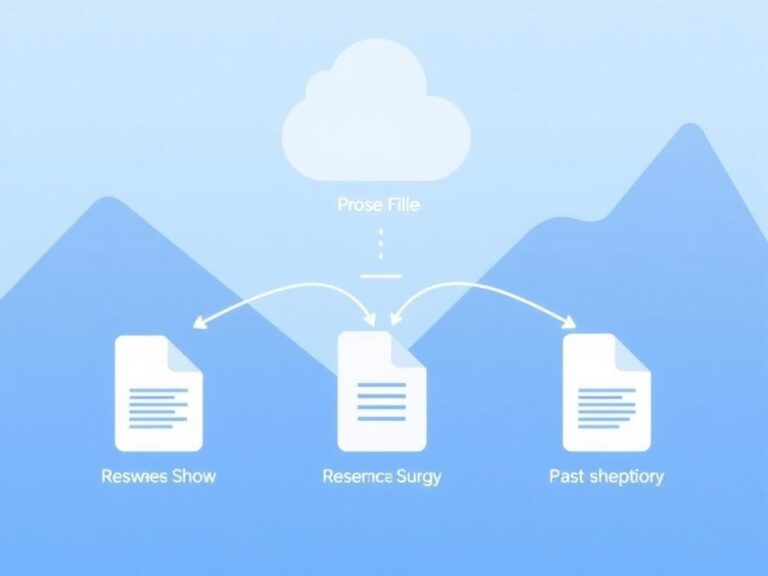Mobile Proxies (Мобильные прокси): Why They’re the New Secret Weapon for Serious Web Work
Mobile proxies — or мобильные прокси — have become a hot topic for anyone who spends serious time on the web for business, research, or competitive intelligence. If you’ve ever struggled with geo-blocks, frequent IP bans, or slow, inaccurate scraping results, mobile proxies promise a smarter, more resilient path forward. They’re not magic, but they offer advantages that traditional datacenter or residential proxies can’t match, especially when it comes to trustworthiness in the eyes of websites and services. In this article I’ll walk you through what mobile proxies are, how they work, where they shine, and what to watch out for when choosing and using them.
What exactly are mobile proxies?
A mobile dynamic proxies routes your internet traffic through a mobile device’s IP address — the kind assigned by mobile network operators. That means when a website sees a request coming through a mobile proxy, it often looks like normal mobile traffic from a smartphone or tablet on a cellular network. This is subtly different from a residential proxy, which uses home broadband IPs, and from datacenter proxies, which use cloud provider addresses that can be flagged more easily. Mobile proxies rely on IPs provided by carriers (3G/4G/5G), and these IPs tend to rotate frequently and are shared among many users on the carrier network. For many online services, that makes them appear more legitimate and less likely to trigger fraud detection systems than datacenter IPs.
Why the Russian term matters
You might see the term “мобильные прокси” used in some communities or by providers targeting Russian-speaking clients. The underlying technology and benefits are the same globally — just the label changes with language. Thinking of both terms can help you find providers and discussions in different regions or markets.
How mobile proxies work — a clear, non-technical view
At a high level, a request from your computer goes through a proxy server, which forwards it to the destination site. With mobile proxies, that forwarding happens through routes connected to mobile carrier infrastructure. The IP address presented to the target site is therefore an IP that belongs to a mobile operator, not a cloud provider or home ISP. There are a few common architectures for mobile proxies:
- SIM-based proxies: These use physical or virtual SIMs tied to mobile devices or IoT routers. Each SIM provides an IP from the carrier network.
- Carrier-grade routing: Some providers have arrangements with carriers to use large pools of carrier NAT IPs without requiring physical SIMs for every connection.
- Residential bridging: A hybrid approach where home or mobile devices act as bridges for proxy traffic, sometimes via apps installed on user devices (less common for ethical providers).
Each approach affects factors like stability, rotation speed, and cost. SIM-based solutions tend to be pricier but give better control over IP behavior.
Mobile vs. Residential vs. Datacenter: a quick comparison
Understanding the differences helps you choose the right tool for the job. Here’s a concise comparison:
| Feature | Mobile Proxies | Residential Proxies | Datacenter Proxies |
|---|---|---|---|
| IP Source | Mobile carrier networks (3G/4G/5G) | Home ISPs / broadband | Cloud/datacenter providers |
| Trust Level | High (seen as mobile users) | High (seen as household users) | Low (often flagged) |
| Rotation | Frequent, carrier-driven | Possible but depends on provider | Stable but easily detectable |
| Cost | Higher | Moderate | Lower |
| Best for | Mobile-focused testing, ad verification, high-resilience scraping | General web scraping, localization testing | Bulk tasks where disguise is less crucial |
Use cases: when mobile proxies make the difference
Mobile proxies aren’t for everyone, but when they’re the right fit, they can turn a difficult task into a doable one. Common use cases include:
- Ad verification and anti-fraud testing: Checking how mobile ads appear to real mobile users in different regions.
- Social media management: Creating and maintaining multiple accounts, or interacting in a way that mimics real mobile users without triggering protections.
- Market research and price monitoring: Some stores and services treat mobile traffic differently; testing from a mobile IP can reveal mobile-specific pricing or offers.
- Web scraping where IP reputation matters: Sites that actively block datacenter IPs may allow mobile IPs more readily.
- App testing and QA: Verifying app behavior and geolocation when routed through carrier networks.

If your project involves any scenario where appearing as a mobile user helps, mobile proxies are worth exploring.
Benefits and limitations: realistic expectations
Mobile proxies come with clear advantages, but they’re not a universal solution. Here’s what to expect. Benefits:
- High acceptance rate: Sites are less likely to block requests from mobile carrier IPs.
- Better mimicry of real mobile behavior: Useful for mobile-first services.
- Frequent rotation and dynamic IPs: Reduces risk of long-term bans.
Limitations:
- Cost: Mobile IPs are more expensive than datacenter or many residential options.
- Speed and latency: Carrier networks can be slower or more variable than datacenter connections, especially under load.
- Legal and ethical complexity: Some ways of sourcing IPs (like sideloaded apps on user devices) can raise privacy concerns.
- Network restrictions: Carriers sometimes restrict certain ports or traffic types, which can affect advanced use cases.
Practical performance notes
Expect slower throughput than datacenter proxies but better reliability in terms of not being flagged. If your workload involves thousands of concurrent connections at high speed, mobile proxies might not be the optimal choice. For targeted, stealthy, and geographically-sensitive tasks, though, they often outperform alternatives.
Choosing a provider and setting up mobile proxies
Picking a provider is as much about trust and transparency as it is about features. Look for these signs of a reputable provider:
- Clear documentation about how IPs are sourced and rotated.
- Transparent pricing and no hidden fees for bandwidth or connection attempts.
- Good support and clear SLAs if uptime matters to you.
- Ethical sourcing policies — avoid providers that rely on borrowed consumer devices without explicit consent.
A simple setup checklist:
- Create an account with a provider and choose the plan that matches your monthly bandwidth and concurrency needs.
- Select the desired geo-targets or carrier pools if the provider offers per-country or per-operator options.
- Choose an authentication method (IP whitelist or username/password); many providers also support session-based rotation.
- Test with a small batch of requests to confirm behavior — check headers, geo-location, and response times.
- Monitor usage and adapt timeout, retry, and concurrency settings to avoid triggering carrier rate limits.
Authentication and rotation strategies
Most providers offer either IP whitelisting or credential-based access to their proxy endpoints. Session-based rotation (where the proxy maintains a session cookie or token and rotates the IP during that session) can be handy if you want short-lived stickiness to an IP without manual rotation. Always start with conservative request rates and scale up as you understand how the specific carrier pool behaves.
Legal, ethical, and privacy considerations
This is crucial: using proxies doesn’t exempt you from laws or the terms of service of the sites you access. Always consider:
- Terms of service: Many platforms explicitly prohibit automated access or multiple accounts. Review and comply where possible.
- Privacy and consent: Avoid providers that source IPs via mechanisms that violate user privacy, such as malware or undisclosed apps running on consumer devices.
- Regional laws: Some countries regulate proxy use, data collection, or impersonation more strictly than others.
If you’re doing anything that could be construed as deceptive or that targets private user data, consult legal counsel. For legitimate tasks like ad verification, SEO research, or public data scraping, mobile proxies are usually acceptable when used responsibly.
Troubleshooting and best practices
If things go wrong or results aren’t what you expected, try these steps:
- Lower your request rate. Carrier pools can throttle aggressive traffic quickly.
- Check the IP geo-location and carrier details returned by the proxy; some providers mix regions in ways you didn’t expect.
- Use realistic request patterns. Emulate mobile headers, user agents, and timing to reduce red flags.
- Monitor errors and set up intelligent retries with backoff to avoid amplifying bans.
- Keep a fallback plan: a mix of mobile, residential, and datacenter proxies can help maintain throughput while preserving stealth.
Pricing models and buying tips
Mobile proxies are more expensive, but providers vary widely in how they bill. Common pricing models include per-GB bandwidth, per-IP or per-sim rental, or subscription plans with a set number of sessions.
| Model | Typical cost drivers | Good for |
|---|---|---|
| Per-GB | Bandwidth used; cheaper for low-volume but can spike with heavy scraping | Occasional testing and low-volume tasks |
| Per-IP / Per-SIM rental | Number of IPs and duration; predictable monthly cost | Consistent, longer-term projects needing stable IP pools |
| Session-based subscriptions | Concurrent sessions and rotation frequency | Automated workflows with need for frequent IP rotation |
Buying tips:
- Start small. Test providers with a trial or a low-tier plan before committing to a high-cost plan.
- Compare carrier diversity and geographic coverage — a provider with many carriers in a country is more robust.
- Watch for hidden limits like connection attempts or per-second caps that can disrupt your workflow.
Final practical thoughts
If you decide mobile proxies are worth the investment, design your workflow around their strengths. Use them selectively for the tasks that benefit most from mobile IPs — ad verification, mobile app testing, and scraping sites that block datacenter IPs. Combine them with best practices: realistic request patterns, good monitoring, and a fallback strategy. Remember that no proxy is a silver bullet, but used thoughtfully, mobile proxies can significantly improve success rates and reduce friction.
Conclusion
Mobile proxies (мобильные прокси) are a powerful but premium tool for anyone who needs to appear as genuine mobile traffic online. They offer higher acceptance rates and better mimicry of real users at the cost of higher prices and occasional performance variability. By choosing reputable providers, testing carefully, and following ethical guidelines, you can harness mobile proxies to solve problems that other proxy types struggle with — from accurate ad verification to resilient scraping and app QA — while keeping risks and surprises to a minimum.





